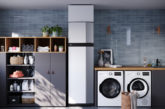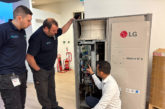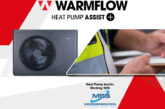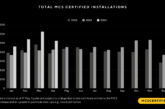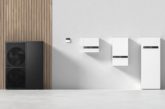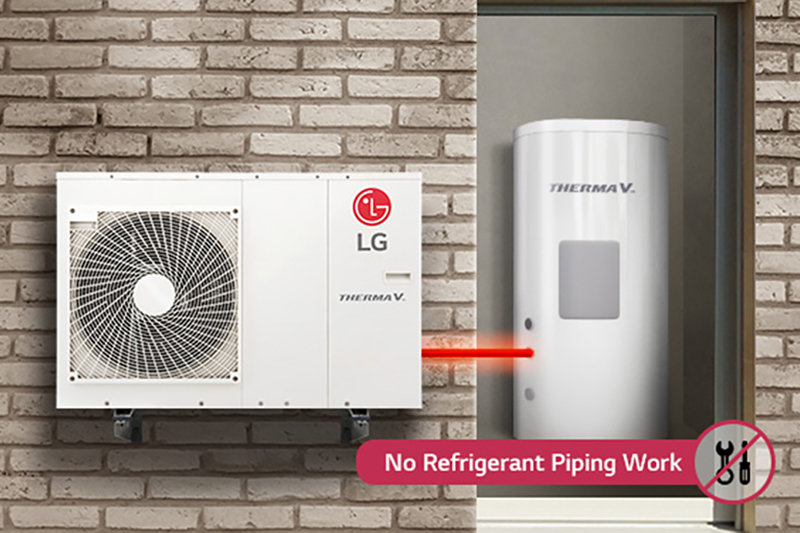
Peter Spurway, National Sales Manager – Heating Projects, LG, outlines some of the changes necessary to increase the number of heat pumps being installed, and introduces the company’s Therma V R32 Hydrosplit system.
As many installers will be aware, recently the Government published its Boiler Upgrade Scheme, announcing £5,000 grants for installing a heat pump instead of a traditional fossil fuel driven boiler from April 2022.
While some will say its too little, too late, it is at least a concrete start as we head towards the Government’s plans for 600,000 heat pumps a year being installed by 2028. That will require significant investment in training installers to fit heat pumps, but at least we are taking the first tentative steps along the pathway that will hopefully lead to zero carbon from domestic heating.
As we all know, for heat pumps to work well, we need the levels of insulation in the home to be of a substantial level – far better than has traditionally been the case.
Also, the heat emitters need to be of the right size and capacity – and that means in particular that radiators need to be larger or have a higher capacity to emit heat. This requirement that has seen the arrival of K3 radiators in the UK – a radiator with three panels and three fins – which is slightly wider but takes up a similar footprint to the K2 which is common in UK homes. Radiator manufacturers have already increased the range of radiator sizes available from stock and added significantly to the available ranges of vertical radiators which also provide a larger metal surface area to heat the air that circulates around the radiator and heats each room.
Hydrosplit system
LG has recently introduced its Therma V R32 Hydrosplit. It’s based on the company’s Monobloc AWHP and connected to the home from the external unit by just a water pipe, so there is no risk of refrigerant flowing into the living space. Without the need for a refrigerant pipe, installation becomes much easier.
The system involves the installation of an outdoor unit, an indoor unit through the wall and a domestic hot water tank. Heating is via underfloor heating downstairs and radiators upstairs, or can be via radiators throughout the house. The system supplies domestic heat and hot water.
The outdoor unit incorporates the LG R1 compressor – operating range is improved to perform from 10Hz to 135Hz. It reaches the energy label ErP A+++ for space heating, and the LG Therma V Monobloc runs on the refrigerant R32 which has a Global Warming Potential of 675.
Response times
LG units offer quick response times for the provision of heating and cooling, by sensing not only the temperature but also pressure – a pressure control sensor provides a fast and accurate response, reducing the time delay for implementing heating or cooling commands significantly. The addition of pressure control enables the Therma V Monobloc to take less time to reach the desired temperatures, with up to 30% quicker response in cooling and 44% quicker response in heating, with a high level of accuracy and stability.
LG has a mobile connectivity package called ThinQ – an app that connects to home appliances. ThinQ enables monitoring of a home from virtually anywhere in the world. This includes controlling, viewing energy consumption, or sending operational data to your service engineer.




